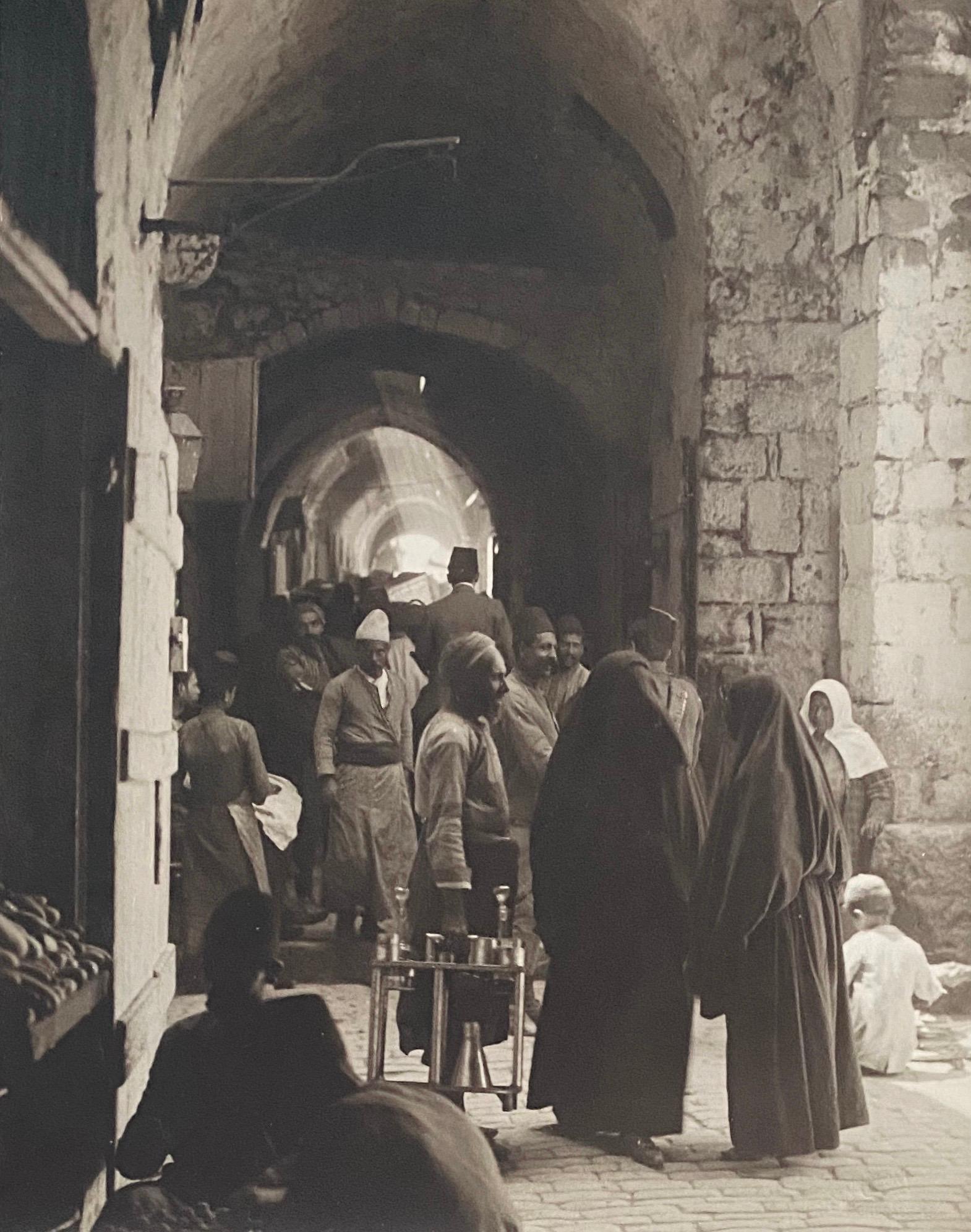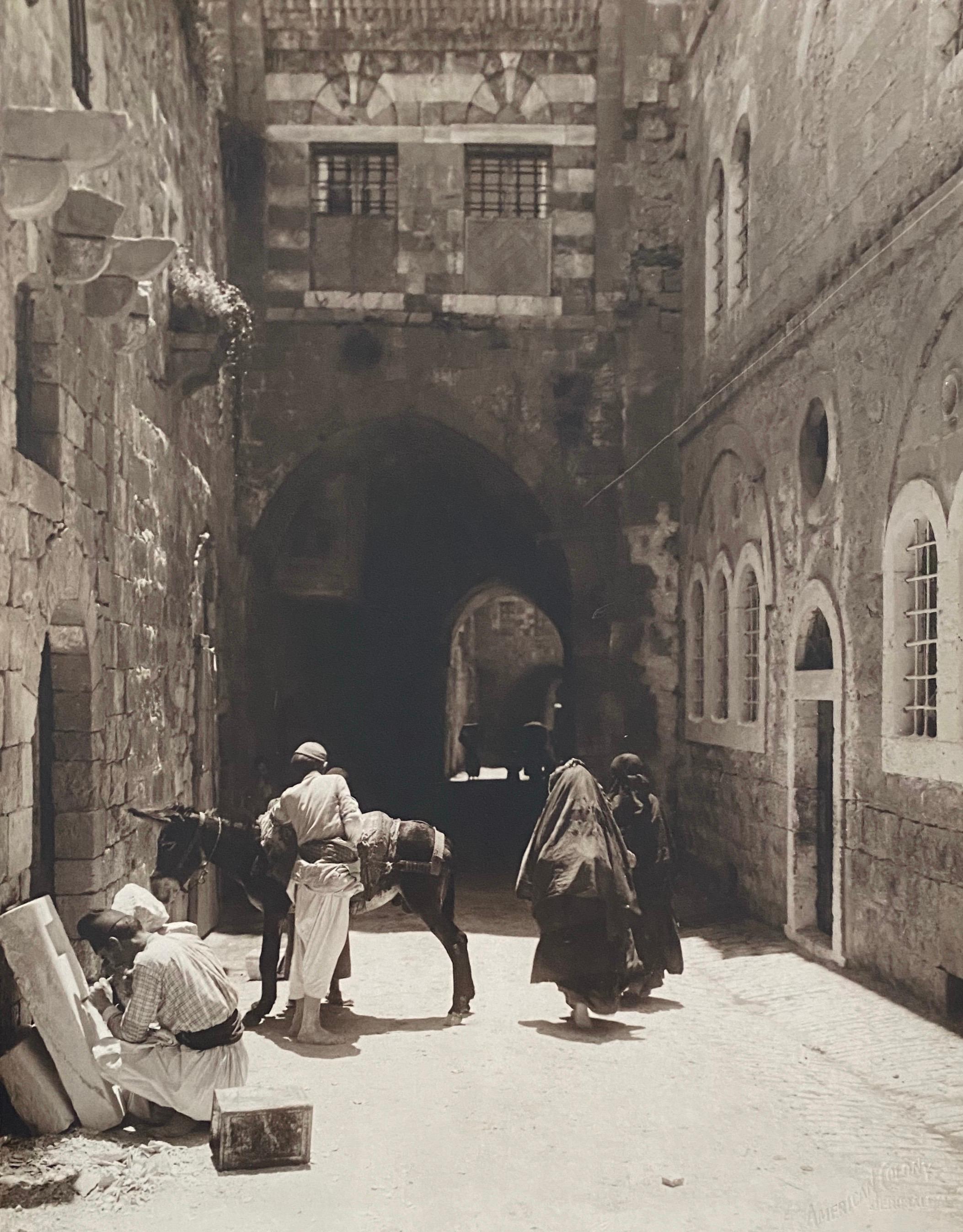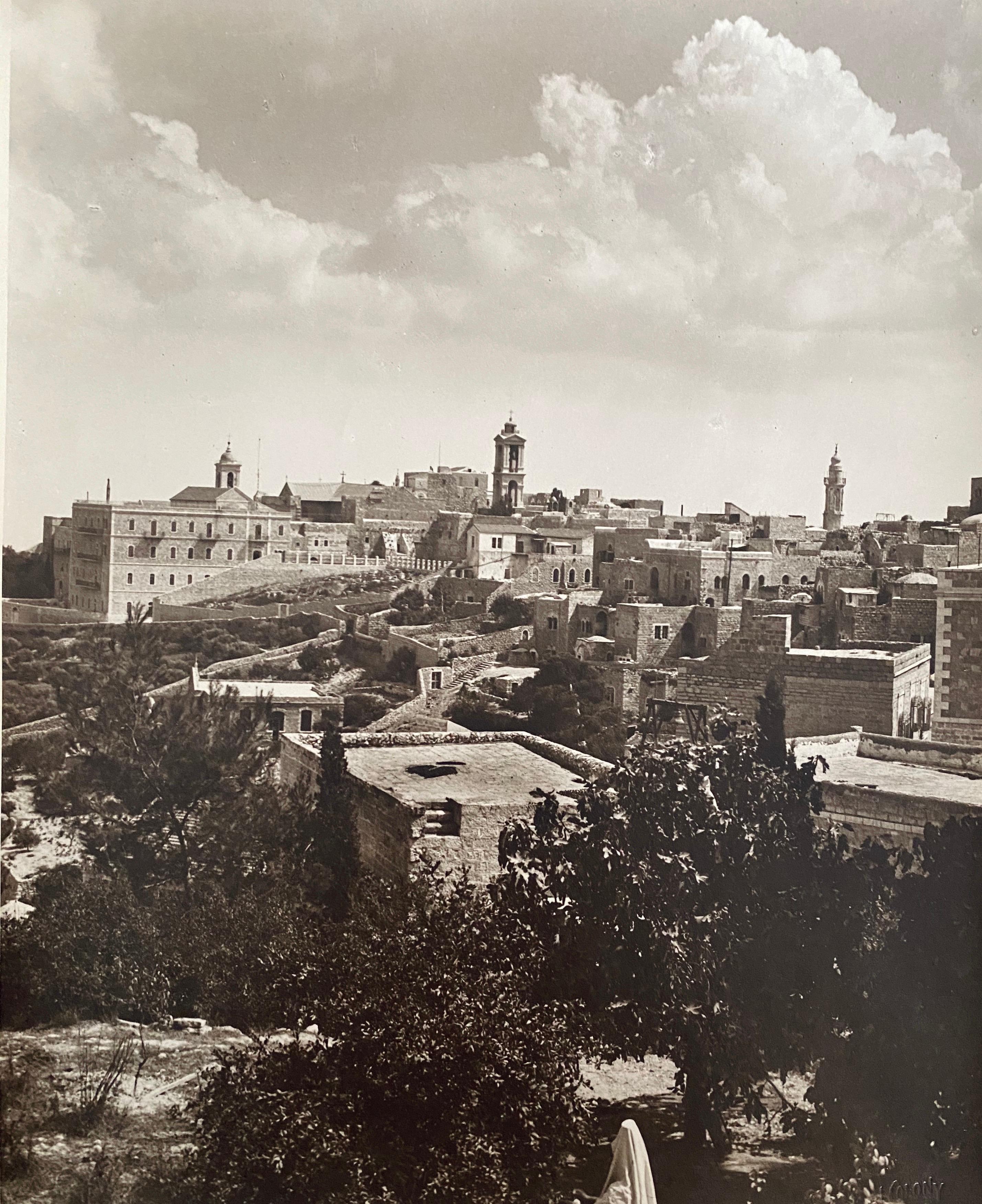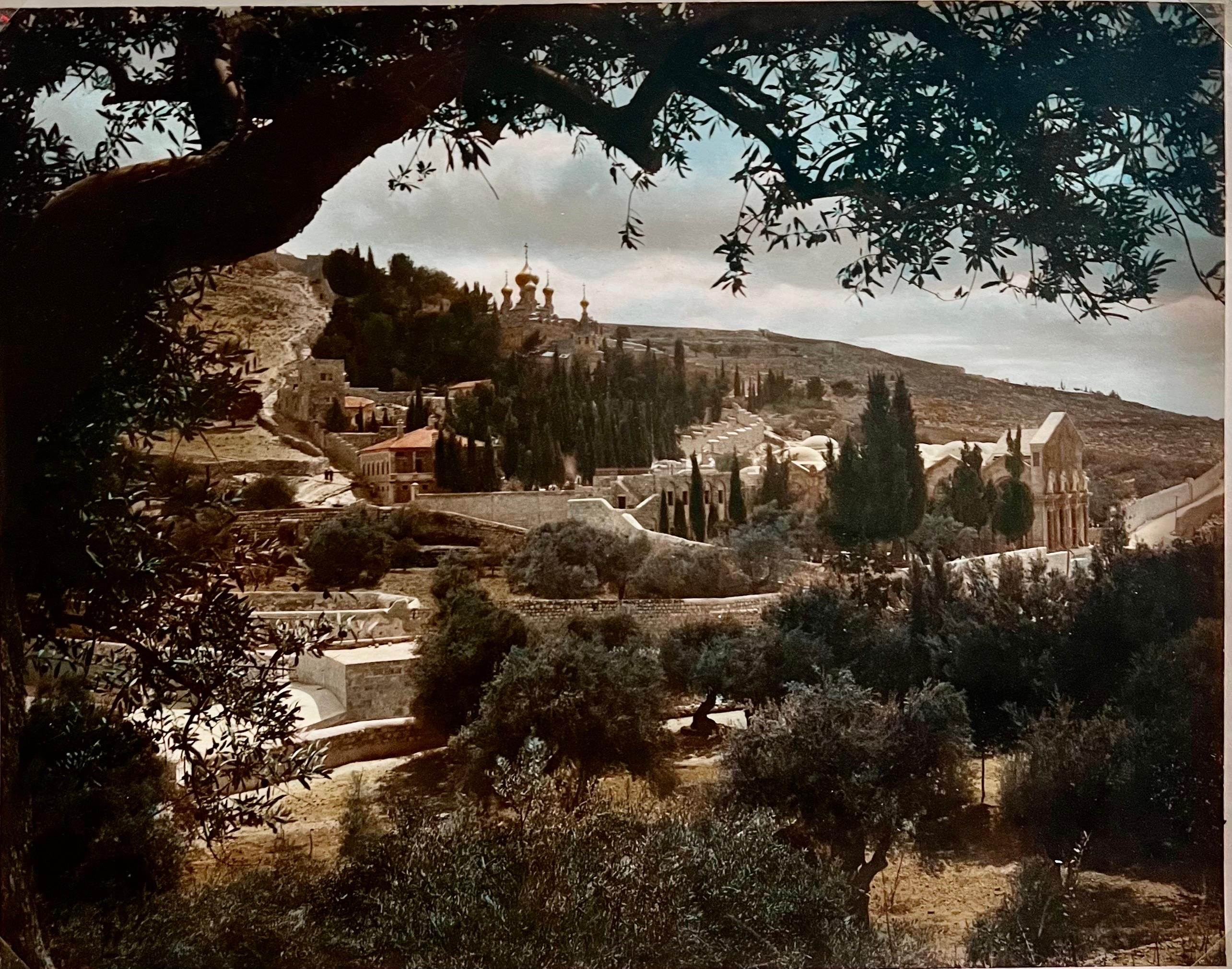Items Similar to Untitled [Modern Interior]
Want more images or videos?
Request additional images or videos from the seller
1 of 2
Eugène AtgetUntitled [Modern Interior]printed c. 1950
printed c. 1950
About the Item
Gelatin silver print made by Berenice Abbott
Signed in pencil by Berenice Abbott, verso
10 x 8 inches, sheet size
9.25 x 7 inches, image size
This artwork is offered by ClampArt, located in New York City.
Eugène Atget was a French flâneur and a pioneer of photography noted for his determination to document all of the architecture and street scenes of Paris before their demolition by urban modernization. Most of his photographs were first published by American artist Berenice Abbott after his death. An inspiration to a wide range of artists, Atget’s genius was only recognized by a small number of young artists in the last years of his life, and he did not live to see the wide acclaim his photography would eventually receive.
- Creator:Eugène Atget (1857-1927, French)
- Creation Year:printed c. 1950
- Dimensions:Height: 10 in (25.4 cm)Width: 8 in (20.32 cm)
- Medium:
- Movement & Style:
- Period:
- Condition:
- Gallery Location:New York, NY
- Reference Number:1stDibs: LU93232904653
About the Seller
5.0
Gold Seller
These expertly vetted sellers are highly rated and consistently exceed customer expectations.
Established in 2000
1stDibs seller since 2018
236 sales on 1stDibs
Typical response time: 2 hours
- ShippingRetrieving quote...Ships From: New York, NY
- Return PolicyA return for this item may be initiated within 3 days of delivery.
More From This SellerView All
- Portrait of Bertold BrechtBy Josef BreitenbachLocated in New York, NYSilver print Stamped in black ink, verso This artwork is offered by ClampArt, located in New York City. Josef Breitenbach (1896-1984) was a German photographer and member of the Su...Category
Mid-20th Century Academic Portrait Photography
MaterialsBlack and White
- Quonset HutBy Ion ZupcuLocated in New York, NYToned gelatin silver print Signed and numbered in pencil, verso 15 x 15 inches (Edition of 10) 30 x 30 inches (Edition of 3) From the series, "American Homes" This artwork is offe...Category
2010s Contemporary Black and White Photography
MaterialsSilver Gelatin
- Pro-SharvatmadariBy Gilles Peress 1Located in New York, NYGelatin silver print Signed in ink, l.r. Artist/Magnum Photos stamp in ink, verso 11 x 14 inches, sheet 8 x 12 inches, image This photograph is offered by ClampArt, located in New ...Category
1980s Other Art Style Black and White Photography
MaterialsSilver Gelatin
- The morning after a rival gang tried to shoot Chivo for the fourth timeBy Joseph RodriguezLocated in New York, NYFull title: "The morning after a rival gang tried to shoot Chivo for the fourth time, Chivo teaches his daughter how to hold a .32-caliber pistol. Her mother looks on." Gelatin silv...Category
1990s Contemporary Black and White Photography
MaterialsSilver Gelatin
- Untitled 507-12By Alan OstreicherLocated in New York, NYSelenium-toned gelatin silver print Signed, titled, dated, and numbered in pencil, verso Also blindstamped with artist's name and edition number, recto 8 x 8 inches, image size (Ed...Category
Early 2000s Contemporary Landscape Photography
MaterialsSilver Gelatin
- Untitled 417-9By Alan OstreicherLocated in New York, NYSelenium-toned gelatin silver print Signed, titled, dated, and numbered in pencil, verso Also blindstamped with artist's name and edition number, recto 8 x 8 inches, image size (Ed...Category
1990s Contemporary Landscape Photography
MaterialsSilver Gelatin
You May Also Like
- Vintage Large Albumen Photo - Via Dolorosa In Station Of The Bross. JerusalemBy American Colony JerusalemLocated in Surfside, FLThe Original American Colony was a colony established in Jerusalem in 1881 by members of a utopian society led by Anna and Horatio Spafford. Now a hotel in East Jerusalem, it is still known by that name today. After suffering a series tragic losses following the Great Chicago Fire of 1871 (see hymn "It is Well with My Soul"), Chicago residents Anna and Horatio Spafford led a small American contingent in 1881 to Jerusalem to form a utopian society. The "American Colony," as it became known, was later joined by Swedish Christians. The society engaged in philanthropic work amongst the people of Jerusalem regardless of religious affiliation, gaining the trust of the local Muslim, Jewish, and Christian communities.During and immediately after World War I, the American Colony carried out philanthropic work to alleviate the suffering of the local inhabitants, opening soup kitchens, hospitals, orphanages and other charitable ventures. Towards the end of the 1950s, the society's communal residence was converted into the American Colony Hotel. The hotel is an integral part of the Jerusalem landscape where members of all communities in Jerusalem still meet. In 1992 representatives from the Palestine Liberation Organization and Israel met in the hotel where they began talks that led to the historic 1993 Oslo Peace Accord. Panorama of Jerusalem, c. 1890-1920 The Colony moved to the large house of a wealthy Arab landowner, Rabbah Husseini, outside the city walls in Sheikh Jarrah on the road to Nablus. Part of the building was used as a hostel for visitors from Europe and America. A small farm developed with animals, a butchery, a dairy, a bakery, a carpenter's shop, and a smithy. The economy was supplemented by a shop selling photographs, craft items and archaeological artifacts. The American Colonists were embraced by the Jewish and Palestinian communities for their good works, among them, teaching in both Muslim and Jewish schools. Photography Around 1900, Elijah Meyers, a member of the American Colony, began taking photographs of places and events in and around the city of Jerusalem. Meyers's work eventually expanded into a full-fledged photographic division within the Colony, including Hol Lars (Lewis) Larsson and G. Eric Matson, who later renamed the effort as the Matson Photographic Service. Their interest in archeological artifacts (such as the Lion Tower in Tripoli pictured here), and the detail of their photographs, led to widespread interest in their work by archeologists. The collection was later donated to the Library of Congress. World War I When the Ottoman Empire entered World War I as an ally of Germany in November 1914, Jerusalem and Palestine became a battleground between the Allied and the Central powers. The Allied forces from Egypt, under the leadership of the British, engaged the German, Austrian and Turkish forces in fierce battles for control of Palestine. During this time the American Colony assumed a more crucial role in supporting the local populace through the deprivations and hardships of the war. Because the Turkish military...Category
Late 19th Century Academic Black and White Photography
MaterialsPhotographic Paper
- Vintage Large Albumen Photo Jerusalem - House Of The "Rich Man"By American Colony JerusalemLocated in Surfside, FLThe Original American Colony was a colony established in Jerusalem in 1881 by members of a utopian society led by Anna and Horatio Spafford. Now a hote...Category
Late 19th Century Academic Black and White Photography
MaterialsPhotographic Paper
- Vintage Large Albumen Photo Jerusalem LandscapeBy American Colony JerusalemLocated in Surfside, FLThe Original American Colony was a colony established in Jerusalem in 1881 by members of a utopian society led by Anna and Horatio Spafford. Now a hote...Category
Late 19th Century Academic Black and White Photography
MaterialsPhotographic Paper
- Vintage Large Albumen Photo Jerusalem Photograph American Colony Old City MarketBy American Colony JerusalemLocated in Surfside, FLThe mat measures 21 X 16 the images are around 12 X 9 inches. They bear the blindstamp of the American Colony Jerusalem. I am not sure if these are hand colored but they are from the period. Old City Shuk or Souq. The Original American Colony was a colony established in Jerusalem in 1881 by members of a utopian society led by Anna and Horatio Spafford. Now a hotel in East Jerusalem, it is still known by that name today. After suffering a series tragic losses following the Great Chicago Fire of 1871 (see hymn "It is Well with My Soul"), Chicago residents Anna and Horatio Spafford led a small American contingent in 1881 to Jerusalem to form a utopian society. The "American Colony," as it became known, was later joined by Swedish Christians. The society engaged in philanthropic work amongst the people of Jerusalem regardless of religious affiliation, gaining the trust of the local Muslim, Jewish, and Christian communities.During and immediately after World War I, the American Colony carried out philanthropic work to alleviate the suffering of the local inhabitants, opening soup kitchens, hospitals, orphanages and other charitable ventures. Towards the end of the 1950s, the society's communal residence was converted into the American Colony Hotel. The hotel is an integral part of the Jerusalem landscape where members of all communities in Jerusalem still meet. In 1992 representatives from the Palestine Liberation Organization and Israel met in the hotel where they began talks that led to the historic 1993 Oslo Peace Accord. Panorama of Jerusalem, c. 1890-1920 The Colony moved to the large house of a wealthy Arab landowner, Rabbah Husseini, outside the city walls in Sheikh Jarrah on the road to Nablus. Part of the building was used as a hostel for visitors from Europe and America. A small farm developed with animals, a butchery, a dairy, a bakery, a carpenter's shop, and a smithy. The economy was supplemented by a shop selling photographs, craft items and archaeological artifacts. The American Colonists were embraced by the Jewish and Palestinian communities for their good works, among them, teaching in both Muslim and Jewish schools. Photography Around 1900, Elijah Meyers, a member of the American Colony, began taking photographs of places and events in and around the city of Jerusalem. Meyers's work eventually expanded into a full-fledged photographic division within the Colony, including Hol Lars (Lewis) Larsson and G. Eric Matson, who later renamed the effort as the Matson Photographic Service. Their interest in archeological artifacts (such as the Lion Tower in Tripoli pictured here), and the detail of their photographs, led to widespread interest in their work by archeologists. The collection was later donated to the Library of Congress. World War I When the Ottoman Empire entered World War I as an ally of Germany in November 1914, Jerusalem and Palestine became a battleground between the Allied and the Central powers. The Allied forces from Egypt, under the leadership of the British, engaged the German, Austrian and Turkish forces in fierce battles for control of Palestine. During this time the American Colony assumed a more crucial role in supporting the local populace through the deprivations and hardships of the war. Because the Turkish military...Category
Early 20th Century Academic Black and White Photography
MaterialsPhotographic Paper
- Vintage Large Albumen Photo Jerusalem Photograph American Colony Mt Zion TreesBy American Colony JerusalemLocated in Surfside, FLThe mat measures 21 X 16 the images are around 12 X 9 inches. They bear the blindstamp of the American Colony Jerusalem. I am not sure if these are hand colored but they are from the period. Old City Shuk or Souq. The Original American Colony was a colony established in Jerusalem in 1881 by members of a utopian society led by Anna and Horatio Spafford. Now a hotel in East Jerusalem, it is still known by that name today. After suffering a series tragic losses following the Great Chicago Fire of 1871 (see hymn "It is Well with My Soul"), Chicago residents Anna and Horatio Spafford led a small American contingent in 1881 to Jerusalem to form a utopian society. The "American Colony," as it became known, was later joined by Swedish Christians. The society engaged in philanthropic work amongst the people of Jerusalem regardless of religious affiliation, gaining the trust of the local Muslim, Jewish, and Christian communities.During and immediately after World War I, the American Colony carried out philanthropic work to alleviate the suffering of the local inhabitants, opening soup kitchens, hospitals, orphanages and other charitable ventures. Towards the end of the 1950s, the society's communal residence was converted into the American Colony Hotel. The hotel is an integral part of the Jerusalem landscape where members of all communities in Jerusalem still meet. In 1992 representatives from the Palestine Liberation Organization and Israel met in the hotel where they began talks that led to the historic 1993 Oslo Peace Accord. Panorama of Jerusalem, c. 1890-1920 The Colony moved to the large house of a wealthy Arab landowner, Rabbah Husseini, outside the city walls in Sheikh Jarrah on the road to Nablus. Part of the building was used as a hostel for visitors from Europe and America. A small farm developed with animals, a butchery, a dairy, a bakery, a carpenter's shop, and a smithy. The economy was supplemented by a shop selling photographs, craft items and archaeological artifacts. The American Colonists were embraced by the Jewish and Palestinian communities for their good works, among them, teaching in both Muslim and Jewish schools. Photography Around 1900, Elijah Meyers, a member of the American Colony, began taking photographs of places and events in and around the city of Jerusalem. Meyers's work eventually expanded into a full-fledged photographic division within the Colony, including Hol Lars (Lewis) Larsson and G. Eric Matson, who later renamed the effort as the Matson Photographic Service. Their interest in archeological artifacts (such as the Lion Tower in Tripoli pictured here), and the detail of their photographs, led to widespread interest in their work by archeologists. The collection was later donated to the Library of Congress. World War I When the Ottoman Empire entered World War I as an ally of Germany in November 1914, Jerusalem and Palestine became a battleground between the Allied and the Central powers. The Allied forces from Egypt, under the leadership of the British, engaged the German, Austrian and Turkish forces in fierce battles for control of Palestine. During this time the American Colony assumed a more crucial role in supporting the local populace through the deprivations and hardships of the war. Because the Turkish military...Category
Early 20th Century Academic Black and White Photography
MaterialsPhotographic Paper
- Vintage Large Albumen Photo Jerusalem Photograph American Colony Old City MarketBy American Colony JerusalemLocated in Surfside, FLThe mat measures 21 X 16 the images are around 12 X 9 inches. They bear the blindstamp of the American Colony Jerusalem. I am not sure if these are hand colored but they are from the period. Old City Shuk or Souq. The Original American Colony was a colony established in Jerusalem in 1881 by members of a utopian society led by Anna and Horatio Spafford. Now a hotel in East Jerusalem, it is still known by that name today. After suffering a series tragic losses following the Great Chicago Fire of 1871 (see hymn "It is Well with My Soul"), Chicago residents Anna and Horatio Spafford led a small American contingent in 1881 to Jerusalem to form a utopian society. The "American Colony," as it became known, was later joined by Swedish Christians. The society engaged in philanthropic work amongst the people of Jerusalem regardless of religious affiliation, gaining the trust of the local Muslim, Jewish, and Christian communities.During and immediately after World War I, the American Colony carried out philanthropic work to alleviate the suffering of the local inhabitants, opening soup kitchens, hospitals, orphanages and other charitable ventures. Towards the end of the 1950s, the society's communal residence was converted into the American Colony Hotel. The hotel is an integral part of the Jerusalem landscape where members of all communities in Jerusalem still meet. In 1992 representatives from the Palestine Liberation Organization and Israel met in the hotel where they began talks that led to the historic 1993 Oslo Peace Accord. Panorama of Jerusalem, c. 1890-1920 The Colony moved to the large house of a wealthy Arab landowner, Rabbah Husseini, outside the city walls in Sheikh Jarrah on the road to Nablus. Part of the building was used as a hostel for visitors from Europe and America. A small farm developed with animals, a butchery, a dairy, a bakery, a carpenter's shop, and a smithy. The economy was supplemented by a shop selling photographs, craft items and archaeological artifacts. The American Colonists were embraced by the Jewish and Palestinian communities for their good works, among them, teaching in both Muslim and Jewish schools. Photography Around 1900, Elijah Meyers, a member of the American Colony, began taking photographs of places and events in and around the city of Jerusalem. Meyers's work eventually expanded into a full-fledged photographic division within the Colony, including Hol Lars (Lewis) Larsson and G. Eric Matson, who later renamed the effort as the Matson Photographic Service. Their interest in archeological artifacts (such as the Lion Tower in Tripoli pictured here), and the detail of their photographs, led to widespread interest in their work by archeologists. The collection was later donated to the Library of Congress. World War I When the Ottoman Empire entered World War I as an ally of Germany in November 1914, Jerusalem and Palestine became a battleground between the Allied and the Central powers. The Allied forces from Egypt, under the leadership of the British, engaged the German, Austrian and Turkish forces in fierce battles for control of Palestine. During this time the American Colony assumed a more crucial role in supporting the local populace through the deprivations and hardships of the war. Because the Turkish military...Category
Early 20th Century Academic Black and White Photography
MaterialsPhotographic Paper
Recently Viewed
View AllMore Ways To Browse
Antique Black
Black Antique
Modern Interiors
Antique Modern
Modern Antique
Modern Antique Interior
Modern And Antique Interiors
Antique American White
American Antique White
Antique White Interior
Small Black And White Modern Art
Black White Antique Prints
Black And White Antique Prints
Photograph French Interiors
Antique Black And White Photography
19th Century French Interior Scene
Eugene C
19th Century Paris Street Scene





